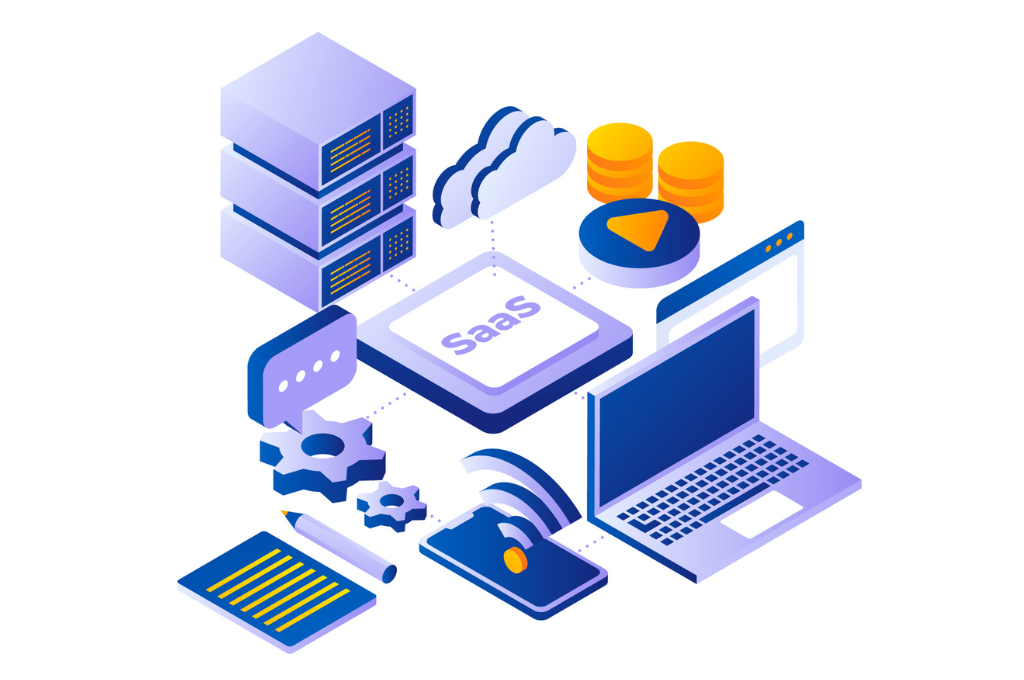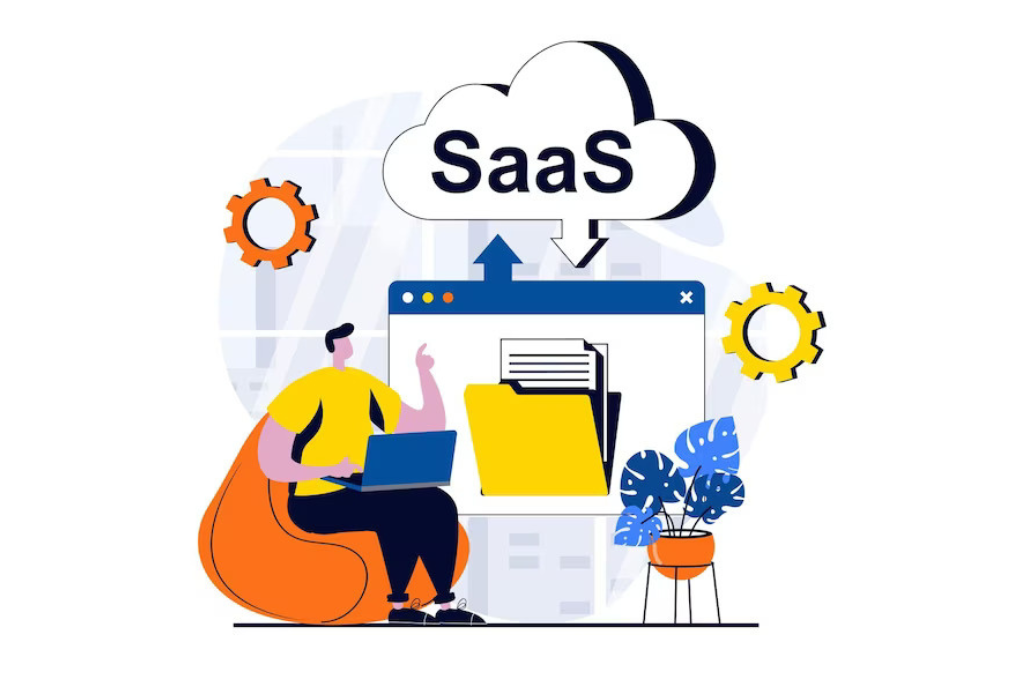In the dynamic landscape of software development, Software as a Service (SaaS) has become one of the innovative and transformative on-premise solutions to the flexibility and agility of cloud-based platforms.
An on-premise solution requires companies and organizations to manage and host software applications locally, necessitating dedicated space for servers, hardware infrastructure, security patches, and maintenance by an in-house IT team dedicated to handling updates and troubleshooting. However, transitioning to cloud-based platforms from these solutions should provide a sense of control, longer administration times, and flexibility limitations, often accompanied by high upfront costs.
According to the statistics, many CEOs of organizations are setting up a reliable SaaS cloud-based platform which is why 93% of them are increasing their investments in software as a service (SaaS) platforms.
The Evolution of SaaS in Cloud-Based Platforms
The emergence of SaaS marked a paradigm shift in the cloud-based platform industries. Moreover, SaaS marketing agencies offer a subscription-based platform wherein it can be accessed through the use of the internet, and by this, it helps the organization for the seamless deployment in the cloud-based platforms, reducing the capital dissipation, and allowing the organization to concentrate more in their company’s core competencies.
The key to having an on-premise solution for cloud-based platforms includes:
Flexibility
Cloud-based SaaS platforms are fundamentally flexible for the organization and businesses to easily adjust their features and portability as they ensure optimal resource utilization, and grow contracts of cloud-based solutions. For instance, B2B subscription billing software provides flexible options for pricing and features as per their client requirement.
Cost Efficiency
Organizations could use the SaaS to eliminate the need for essential upfront investments in terms of infrastructure and hardware. Moreover, using SaaS can help organizations reduce the total cost of ownership by paying on a per-user basis and software services. Plus, with the best vendor management systems, organizations can find discounts on tools and software they use, saving time.
Maintenance and Automatic Updates
Using SaaS in cloud-based platforms can greatly help the organization in seamlessly handling software maintenance and updates while ensuring the organization always has access to the new update features and security patches without overriding and disrupting the company’s operations. At the same time, license management solutions help maintain proper software access, ensuring that updated applications remain available to authorized users without compliance or allocation issues.
Collaboration and Accessibility
The accessibility of SaaS in cloud-based platforms becomes crucial in the age of work remote and global business operations in one’s company. Moreover, this could also help the organization in terms of the collaboration process wherein the SaaS facilitates anywhere access to applications and can foster collaboration factors among distributed teams.
Enhancing SaaS Capabilities in Cloud-Based Platforms
In today’s generation, SaaS has revolutionized and dominated the software development and deployment process. The transition to cloud-based platforms has further enhanced its capabilities, delivering SaaS through the use of Platform as a Service (PaaS) and Infrastructure as a Service (IaaS), providing seamless control over the underlying infrastructure. For example, SaaS companies like Convin build AI-powered customer support solutions that help businesses enhance customer interactions, automate responses, and improve service efficiency through intelligent conversation analysis.
-
PaaS: Platform as a Service is one of the cloud-based platforms that offer a complete deployment and development in the environment of the cloud that enables the companies to deploy, develop, scale, and build applications without concern about the underlying infrastructure but accelerating the organizational development cycle.
-
IaaS: Infrastructure as a Service can help organizations leverage infrastructure to host their applications while gaining more control over the operating system, application, and middleware. Moreover, this type of service represents a hybrid approach, customizing infrastructure management potential while obtaining the benefits of SaaS.
- AaaS: Agents as a Service, it refers to a cloud-based model where intelligent, autonomous AI agents are provided as a service to businesses, allowing them to perform tasks independently, like managing customer service requests, automating workflows, or completing complex operations, without requiring significant human intervention.
Future Trends Opportunities in SaaS Evolution
The opportunity in SaaS becomes more evolutional and ongoing, so these are the future trends that can shape the future of SaaS that include:
1. Enhancement in Security Measures: One of the major concerns of the SaaS in the cloud-based platforms is about their cybersecurity, the SaaS provides and continually invests in advanced security measures that include multi-factor authentication, proactive threat detection, and secured encryption of one’s company.
2. Artificial Intelligence and Machine Learning Integration: SaaS supports the applications in incorporating machine learning integration and artificial intelligence used to provide accurate data analytics, intelligent automation, and enhanced user experience.
3. Edge Computing Integration: This kind of opportunity for SaaS allows organizations to reduce the latency and improve the real-time decision-making of the company. Also, edge computing coexistence allows the organization to process data closer to the source.
Conclusion
In conclusion, the evolution of SaaS from on-premise solutions to cloud-based platforms has been pivotal and convenient in shaping the development and deployment of software within organizations. Moreover, in terms of its transition to cloud-based platforms, it has become more efficient in the operational process and also optimized the costs in the company wherein it adapts an empowered business model to the ever-changing demands of the digital era.
In this generation, the trajectory of SaaS development and its evolution will envision even greater innovations with functionalities on how organizations can level software solutions for their company’s core business to give high-quality service to their customers.
Frequently Asked Questions (FAQs)
How does cloud computing play a role in the evolution of Software as a service (SaaS)?
Cloud computing offers enhanced possibilities for Software as a Service (SaaS) and Infrastructure as a Service (IaaS)/Platform as a Service (PaaS). SaaS allows enterprises to host applications in the cloud, while IaaS gives them more control over the infrastructure. On the other hand, the PaaS contribution provides a full deployment and development environment to help speed up a company's development cycles.
What is Software as a Service (SaaS) evolution, and how does it differ from traditional on-premise solutions?
Software as a Service (SaaS) evolution is the term used to describe the widespread shift from locally hosted, on-premise software solutions to application cloud migration. In contrast to on-premise solutions, Software as a Service (SaaS) gives customers and the company complete internet access to software programs, which has benefits including cost-effectiveness, automated upgrades, and flexibility.
What are the key advantages of adopting Software as a Service (SaaS) over on-premise solutions?
Software as a Service (SaaS) offers several significant benefits, such as cost efficiency, accessibility, flexibility, maintenance, and automatic updates. Additionally, Software as a Service (SaaS) removes the need for upfront hardware purchases for the company, enabling resource scaling at an efficient rate, complete application ownership, anytime, anywhere access, and seamless platform updates and maintenance.




















